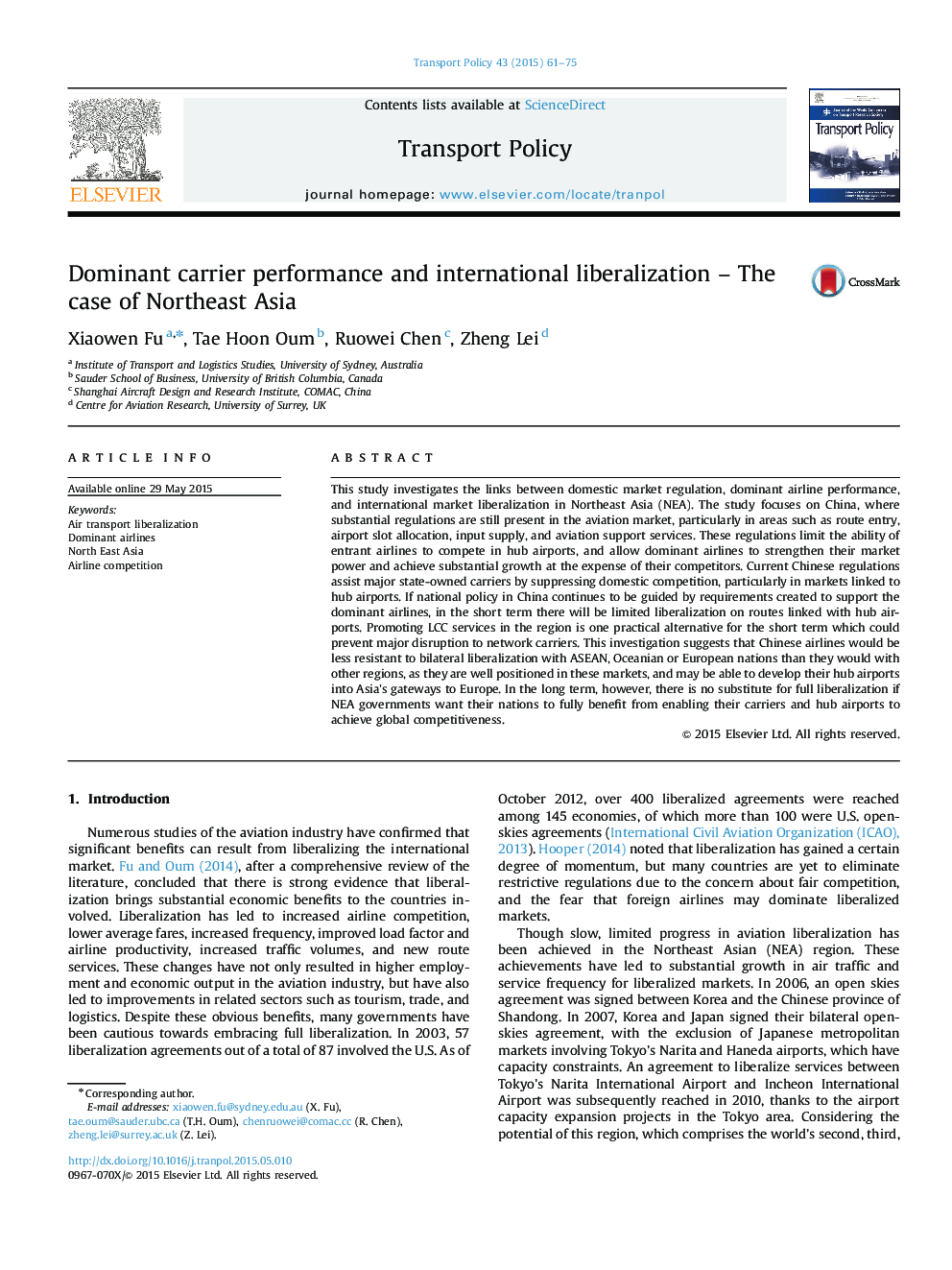| Article ID | Journal | Published Year | Pages | File Type |
|---|---|---|---|---|
| 1064736 | Transport Policy | 2015 | 15 Pages |
This study investigates the links between domestic market regulation, dominant airline performance, and international market liberalization in Northeast Asia (NEA). The study focuses on China, where substantial regulations are still present in the aviation market, particularly in areas such as route entry, airport slot allocation, input supply, and aviation support services. These regulations limit the ability of entrant airlines to compete in hub airports, and allow dominant airlines to strengthen their market power and achieve substantial growth at the expense of their competitors. Current Chinese regulations assist major state-owned carriers by suppressing domestic competition, particularly in markets linked to hub airports. If national policy in China continues to be guided by requirements created to support the dominant airlines, in the short term there will be limited liberalization on routes linked with hub airports. Promoting LCC services in the region is one practical alternative for the short term which could prevent major disruption to network carriers. This investigation suggests that Chinese airlines would be less resistant to bilateral liberalization with ASEAN, Oceanian or European nations than they would with other regions, as they are well positioned in these markets, and may be able to develop their hub airports into Asia's gateways to Europe. In the long term, however, there is no substitute for full liberalization if NEA governments want their nations to fully benefit from enabling their carriers and hub airports to achieve global competitiveness.
